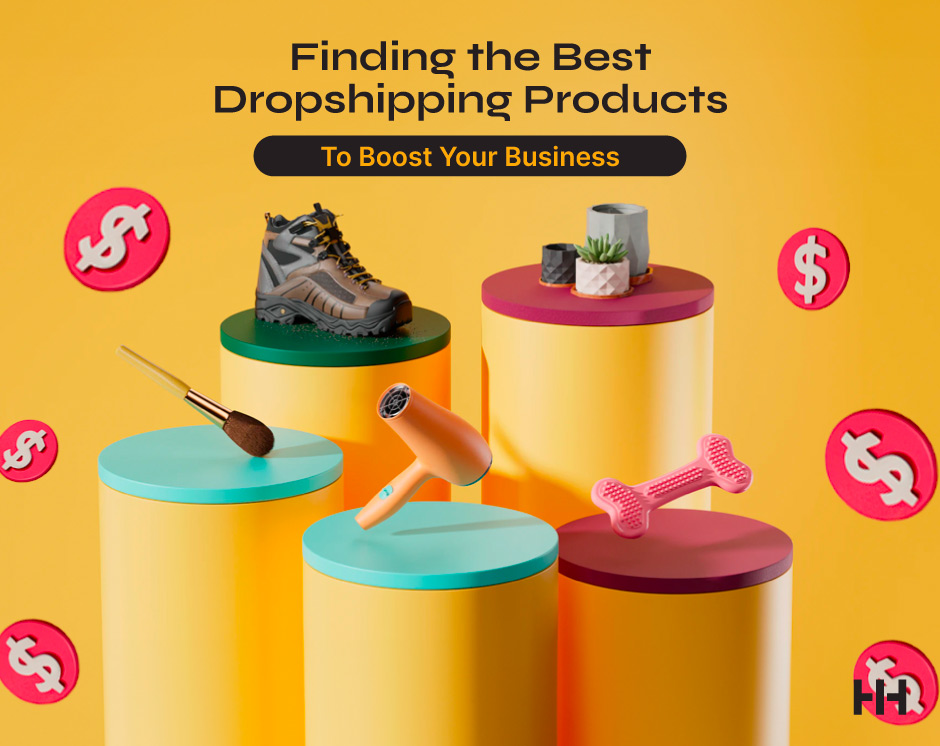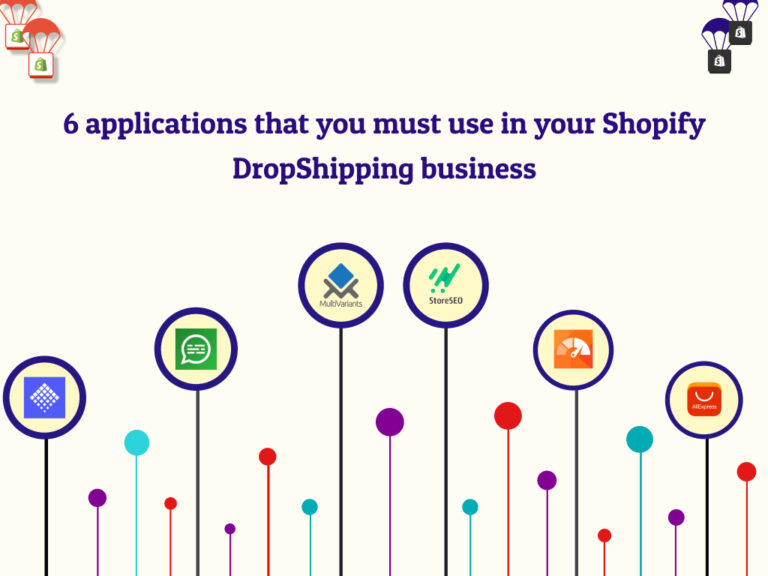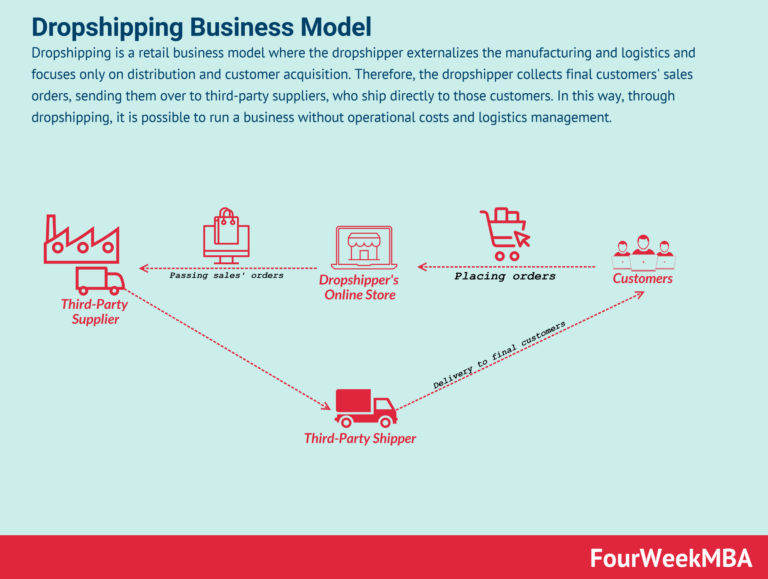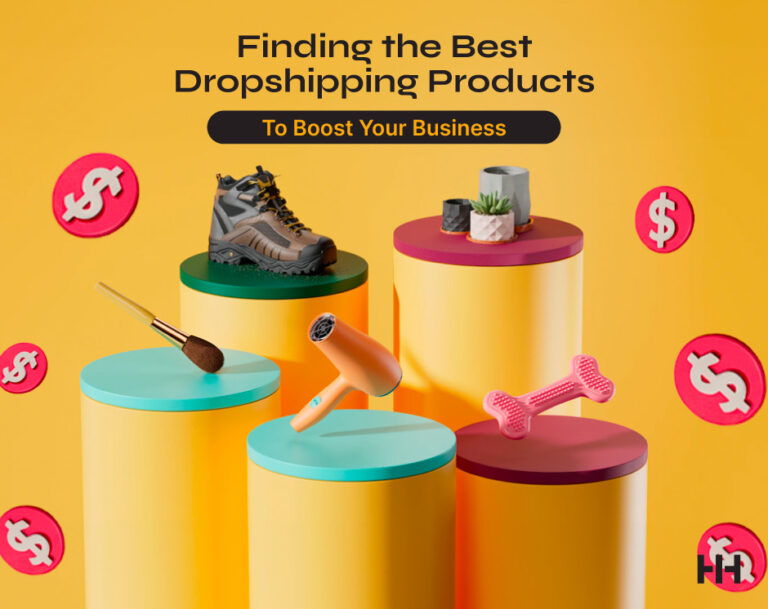What Is Dropshipping and How Does It Work? (2025)
Your Complete Guide to best dropshipping
Welcome to Your Entrepreneurial Journey
Congratulations on taking the first step towards launching your own online business! Your ambition to start a venture is commendable, and the world of e-commerce is brimming with opportunities, especially through dropshipping. But what exactly is dropshipping? Simply put, it is a retail fulfillment method where you don’t need to keep the products you sell in stock. Instead, when you sell a product, you purchase the item from a third party and have it shipped directly to the customer. This means you can run a store without ever handling the physical inventory, making it an appealing option for beginners.
One of the most significant advantages of dropshipping is the low startup cost. Unlike traditional retail models that require substantial investment in inventory, dropshipping allows you to start your business with minimal financial risk. You can focus your resources on marketing and building your brand rather than worrying about warehouse space or unsold inventory. Additionally, the flexibility of dropshipping empowers you to operate your business from anywhere in the world, whether it’s your living room or a beachside café.
This guide is designed to equip you with everything you need to know to launch a successful dropshipping business. We’ll cover a complete roadmap, starting from how to identify the right products to sell, to selecting reliable suppliers, and integrating your e-commerce platform. You’ll also learn effective marketing strategies to attract customers and ultimately make your first sale. Each section is packed with actionable insights and tips to ensure you can navigate the dropshipping landscape with confidence.
As you embark on this journey, remember that every successful entrepreneur started with a dream and the determination to make it a reality. The world of dropshipping is accessible, and with the right guidance, you can turn your entrepreneurial aspirations into a thriving business. So, let’s dive in and transform your vision into success—your future as a dropshipping entrepreneur starts now!
What You’ll Learn In This Guide
- Your Complete Guide to best dropshipping
- How Does Dropshipping Actually Work? A Step-by-Step Breakdown
- The Pros and Cons of Dropshipping: Is It Right for You?
- Step 1: Finding a Profitable Niche and Winning Products
- Step 2: Choosing the Right Dropshipping Suppliers
- Step 3: Building Your Online Store
- Step 4: Marketing Your Dropshipping Business to Get Sales
- Common Mistakes to Avoid as a Beginner
- Frequently Asked Questions (FAQs) about best dropshipping
- Conclusion: Your Next Steps to Launching Your Business
- Important Disclaimer
How Does Dropshipping Actually Work? A Step-by-Step Breakdown
Understanding the Dropshipping Model: A Step-by-Step Guide
Starting a dropshipping business can feel overwhelming, but by breaking it down into manageable steps, you can clearly see how the model works. Think of yourself as a digital storefront and middleman, connecting customers to products without ever touching the inventory. Here’s how the dropshipping process flows:
- Customer Places an Order on Your Online Store
-
When a customer visits your e-commerce site, they browse your curated selection of products. Once they find something they want, they place an order and make a payment. This is the first crucial step where you begin to establish a relationship with your customer.
-
You Receive the Payment
-
After the customer completes their purchase, the payment is processed through your payment gateway. This step is vital as it not only confirms the transaction but also secures your profit margin. You’ll typically receive the retail price minus any fees charged by your payment processor.
-
You Forward the Order to Your Supplier
-
Once you have the order and payment, it’s time to take action. You then forward the order details to your dropshipping supplier. This can often be done automatically through integration tools that sync your e-commerce platform with your supplier’s system. At this point, you will also pay the supplier the wholesale price for the product, which is significantly lower than the retail price you charged the customer.
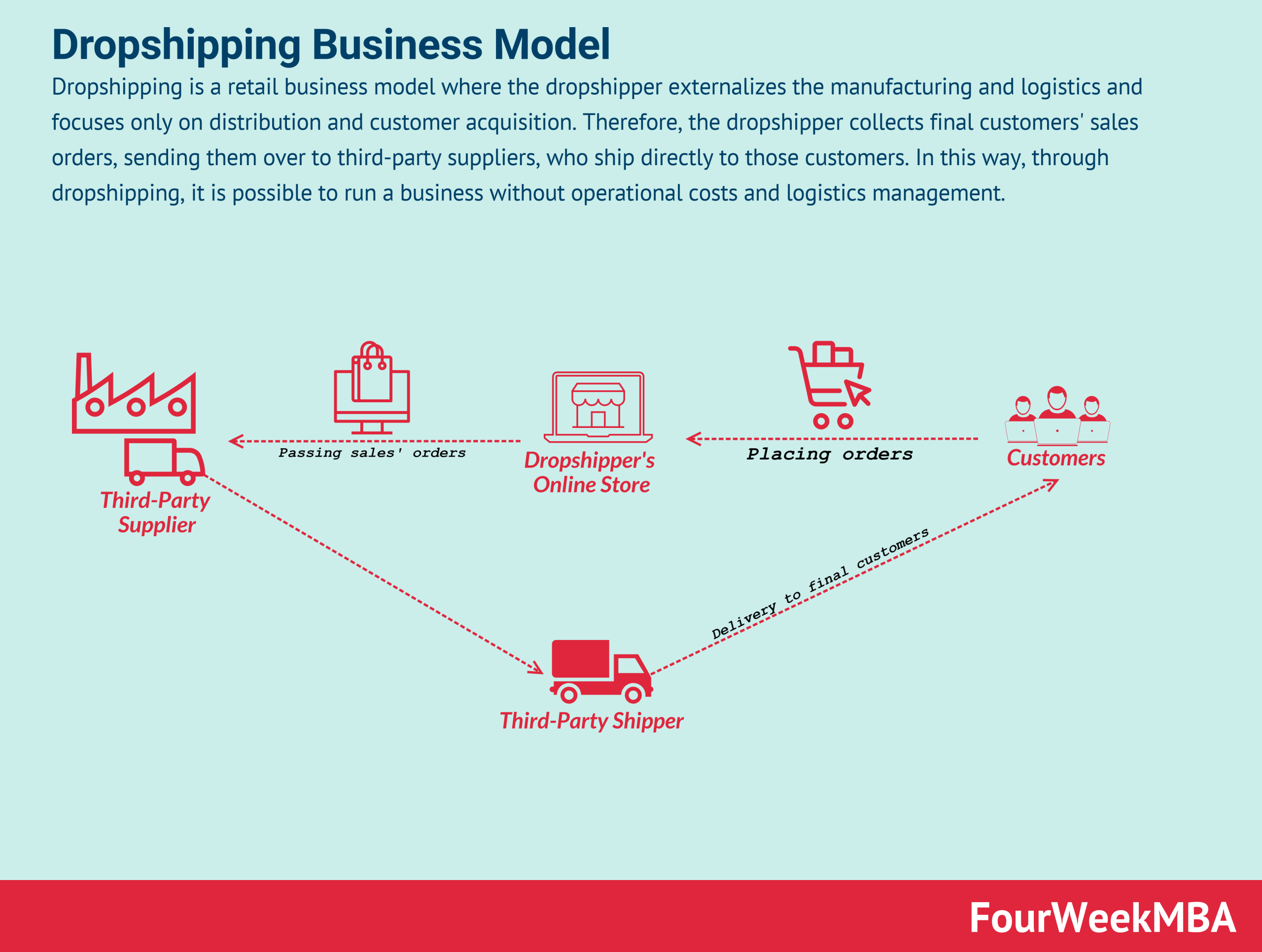
-
The Supplier Ships the Product Directly to the Customer
- After receiving your order, the supplier takes care of packaging and shipping the product directly to your customer. This is one of the main advantages of dropshipping; you never have to manage or store inventory. The supplier handles all aspects of fulfillment, ensuring that the product reaches your customer in a timely manner.
The Flow of Money and Goods
To clarify the flow of money and goods in this model, let’s visualize it:
- Money Flow:
- Customer to You: The customer pays you the retail price.
-
You to Supplier: You then pay the supplier the wholesale price, keeping the difference as your profit.
-
Goods Flow:
- Supplier to Customer: The supplier ships the product directly to the customer, allowing for a seamless experience where the customer never knows you don’t handle the inventory.
Analogy: The Digital Storefront
Think of your dropshipping business like a restaurant that doesn’t cook its own meals. Instead, you take orders from customers (dining guests), forward those orders to a kitchen (the supplier), and have the kitchen prepare and deliver the meal straight to the table (the customer). You manage the menu (product selection) and ensure excellent service (customer support) but never actually handle the food (inventory).
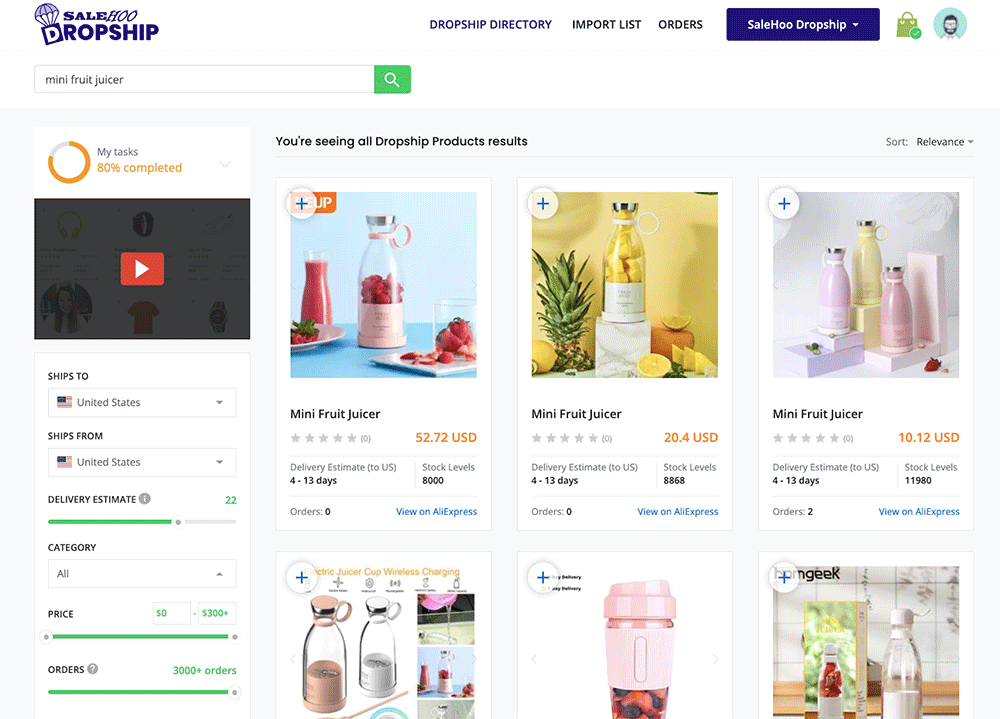
Key Takeaways
- Minimal Investment: You don’t need to purchase inventory upfront, which lowers your financial risk.
- Focus on Marketing and Customer Experience: With the logistics handled by suppliers, you can concentrate on attracting customers and providing excellent service.
- Scalability: As your business grows, you can easily add more products and suppliers without the need for additional physical space or inventory management.
By understanding these steps and the flow of money and goods, you can confidently navigate the dropshipping model and set your business up for success. Remember, the key to thriving in dropshipping lies in selecting the right products, maintaining strong supplier relationships, and providing outstanding customer service.
The Pros and Cons of Dropshipping: Is It Right for You?
Advantages and Challenges of Dropshipping
| Advantages of Dropshipping (Pros) | Challenges of Dropshipping (Cons) |
|---|---|
| Low Financial Risk: No need for upfront inventory costs. | Low Profit Margins: Competitive pricing can squeeze profits. |
| Easy to Get Started: Simple setup with user-friendly platforms. | High Competition: Saturated market leads to fierce competition. |
| Wide Product Selection: Access to a vast catalog of items. | Supplier Dependence: Relying on third-party suppliers can lead to issues. |
| Location Independence: Operate your business from anywhere with internet access. | Shipping Complexities: Managing shipping times and costs can be challenging. |
| Scalability: Easily scale your business without the constraints of inventory management. | Customer Service Challenges: Handling complaints related to fulfillment can be tough. |
| Flexibility: Adjust product offerings quickly based on market trends. | Quality Control Issues: Lack of direct control over product quality can impact brand reputation. |
| Test New Products: Quickly experiment with new items without risk. | Payment Processing Delays: Funds may be held during chargebacks or disputes. |
Exploring the Pros of Dropshipping
Low Financial Risk
One of the most appealing aspects of dropshipping is the minimal financial risk involved. Since you don’t need to invest in inventory upfront, you can start your e-commerce business with a very low initial investment. This is particularly beneficial for beginners who may not have significant capital to commit. By only purchasing items after a customer has placed an order, you avoid the pitfalls of unsold stock and can focus on marketing and sales strategies instead.
Easy to Get Started
The dropshipping model is notably beginner-friendly. With various platforms like Shopify, WooCommerce, and others, setting up an online store has never been easier. Many suppliers provide integrated systems that allow you to manage your products and orders seamlessly. This ease of access means that aspiring entrepreneurs can dive into the world of e-commerce without the steep learning curve often associated with traditional retail businesses.
Wide Product Selection
Dropshipping opens up the door to an extensive catalog of products, often exceeding hundreds of thousands of items across various niches. This allows you to tailor your offerings to meet the specific needs and preferences of your target market. You can easily pivot your inventory to align with current trends or customer demands without the burden of holding excess stock.
Scalability
As your business grows, so does the potential for expansion. Dropshipping allows you to scale your operations without the constraints of physical inventory management. You can increase your product offerings, target new markets, or enhance your marketing efforts without worrying about how much stock you have on hand. This flexibility is a significant advantage for entrepreneurs looking to grow their online presence.
Addressing the Cons of Dropshipping
Low Profit Margins
While dropshipping offers numerous benefits, one of the most significant challenges is the low profit margins. Due to the competitive nature of the market, many dropshippers find themselves in a race to the bottom on pricing. This can make it difficult to maintain healthy profit margins, particularly if you’re selling in a saturated niche. It’s essential to strategize on how to differentiate your brand and provide additional value to your customers to combat this issue.
High Competition
With the ease of entry into the dropshipping space, competition is fierce. Many entrepreneurs are drawn to this business model, leading to a crowded market. To stand out, you need to invest time in market research, develop a solid marketing strategy, and establish a unique selling proposition that resonates with your audience. Otherwise, you may find it challenging to gain traction.
Supplier Dependence
Another significant challenge is the reliance on third-party suppliers for inventory and fulfillment. If a supplier runs out of stock or fails to deliver on time, it directly impacts your business and customer satisfaction. To mitigate this risk, it’s vital to establish strong relationships with reliable suppliers and have backup options available.
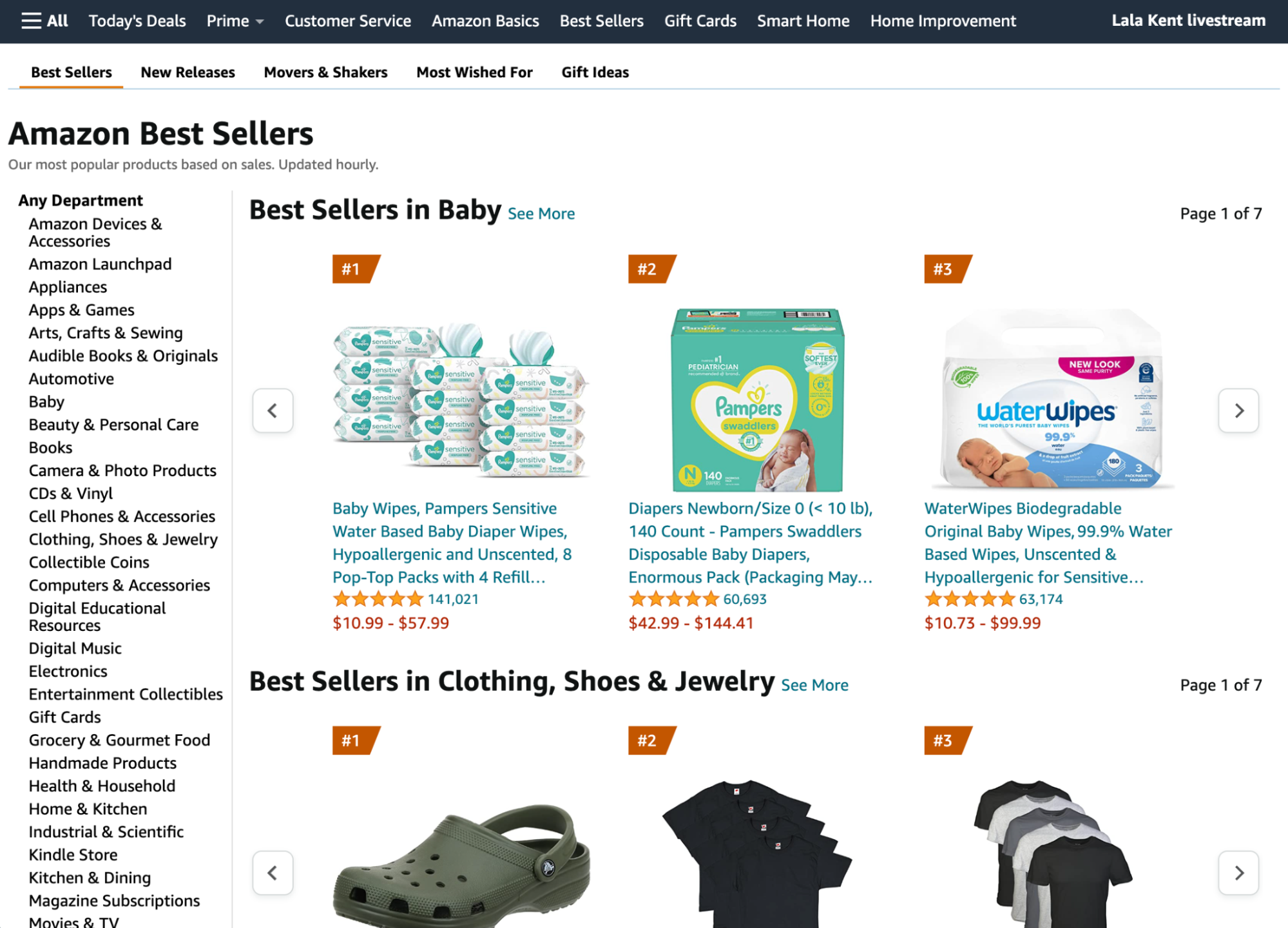
Quality Control Issues
Since you don’t handle the products directly, maintaining quality control can be difficult. If a customer receives a defective or subpar product, it reflects poorly on your brand, even if the issue lies with the supplier. To manage this risk, consider conducting regular checks and monitoring customer feedback closely.
Conclusion
In summary, dropshipping presents an attractive opportunity for aspiring entrepreneurs looking to enter the e-commerce space with minimal investment. However, it’s essential to weigh the advantages against the challenges. By understanding the pros and cons, you can make informed decisions and strategically position your business for success. Whether you choose to pursue dropshipping or explore other business models, remember that every venture requires dedication, research, and a willingness to adapt.
Step 1: Finding a Profitable Niche and Winning Products
What Makes a Good Niche?
Choosing the right niche is the cornerstone of a successful dropshipping business. A good niche not only reflects your interests but also aligns with market demand. Here are key characteristics of a profitable niche:
-
Passion and Interest: It’s essential to select a niche that you are passionate about. This will keep you motivated during the challenging initial phases of your business.
-
Market Demand: Research shows that niches with a steady demand are more sustainable. Use tools like Google Trends to analyze search volumes and consumer interest over time.
-
Low Competition: A niche with moderate competition offers a better chance of establishing your brand. Tools like SEMrush or Ahrefs can help you assess competition levels by analyzing keyword difficulty and competitor strategies.
-
Profitability: Ensure that your chosen niche has products with suitable profit margins. Typically, a 30-50% markup is ideal in dropshipping. Analyze costs, including shipping, to ensure profitability.
-
Target Audience: Understand who your customers are. A well-defined target audience allows for tailored marketing efforts, improving conversion rates.
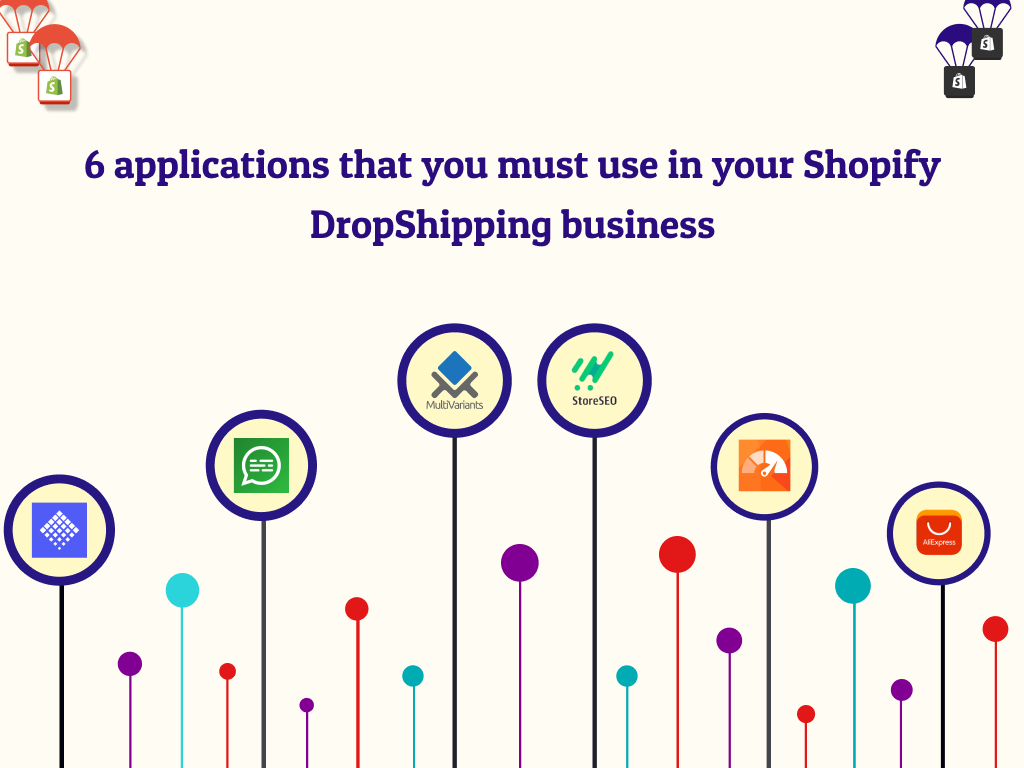
How to Brainstorm Niche Ideas
Generating niche ideas can be both exciting and daunting. Here are some effective brainstorming techniques:
-
Personal Interests and Hobbies: Start by listing your hobbies and interests. This personal connection can guide you toward a niche that you will enjoy working in.
-
Marketplaces and E-commerce Platforms: Browse through platforms like Amazon, eBay, or Etsy. Look at best-sellers and trending items. Their lists can provide insight into what consumers are currently buying.
-
Social Media Insights: Platforms like Pinterest, Instagram, and TikTok are great for discovering trending products. Check hashtags related to your interests to see what’s gaining traction.
-
Forums and Online Communities: Engage in forums like Reddit or niche-specific Facebook groups. These communities can provide valuable insights into consumer problems and preferences.
-
Seasonal Trends: Consider products that peak during specific seasons or events. Tools like Google Trends can help you analyze seasonal search patterns.
-
Competitor Analysis: Examine successful dropshipping stores. Tools like SimilarWeb can help you identify competitors, their products, and their market strategies.
Validating Your Niche
Once you have a niche in mind, validating it is crucial to ensure its viability. Here are steps to effectively validate your niche:
-
Keyword Research: Utilize keyword research tools like Ubersuggest or Google Keyword Planner to check search volumes for your niche-related keywords. High search volume indicates demand.
-
Engage with Potential Customers: Conduct surveys or interviews with your target audience. Ask about their needs, preferences, and willingness to purchase products in your niche.
-
Test with Minimal Viable Products (MVP): Create a simple landing page or social media ad to gauge interest. Direct traffic to this page and measure engagement or sign-ups.
-
Analyze Trends and Competitors: Use tools like BuzzSumo to analyze trending topics and content related to your niche. This can reveal consumer interests and the competitive landscape.
-
Check Online Marketplaces: Look for existing products on platforms like Amazon or eBay. High sales ranks and customer reviews indicate consumer demand and satisfaction.
-
Evaluate Profit Margins: Calculate potential profit margins based on supplier prices and expected selling prices. Ensure that the margins are sustainable for your business model.
Methods for Finding Winning Products
Finding the right products is essential for your dropshipping success. Here are actionable methods to discover winning products:
-
Supplier Marketplaces: Use platforms like AliExpress, SaleHoo, or TopDawg to explore products available for dropshipping. Filter by categories, best-sellers, and customer ratings to find high-potential items.
-
Social Media Trend Tools: Tools like TrendHunter or BuzzSumo can help identify trending products and topics. Monitor what’s popular among influencers and consumers.
-
Product Criteria:
- Price Point: Aim for products that are priced between $15 and $200. This range typically offers a good balance of demand and profitability.
- Unique or Hard-to-Find: Products that are not widely available in local stores or are unique in design tend to attract more interest.
-
Problem Solving: Products that solve a common problem or fulfill a specific need often see higher conversion rates.
-
Customer Reviews and Feedback: Analyze reviews on platforms like Amazon to identify pain points and desires of customers. This feedback can guide you in selecting products that meet consumer expectations.
-
Seasonal and Trend Analysis: Keep an eye on seasonal products or those that gain popularity during specific times. Tools like Google Trends can help you spot these trends ahead of time.
-
Utilize Data Analytics: Once your store is live, use analytics tools to track which products are performing well. Google Analytics and Facebook Insights can provide valuable data on customer behavior and preferences.
-
Test Multiple Products: Don’t put all your eggs in one basket. Start with a range of products and monitor which ones perform best. Use A/B testing to refine your offerings based on customer response.
Conclusion
Finding a profitable niche and winning products is a critical step in your dropshipping journey. By understanding what makes a good niche, brainstorming effectively, validating your ideas, and utilizing various methods for product research, you can set a solid foundation for your e-commerce business. Remember, the key is to stay adaptable, continuously monitor market trends, and be willing to pivot as needed. With persistence and strategic planning, you can build a thriving online business with minimal investment. Happy dropshipping!
Step 2: Choosing the Right Dropshipping Suppliers
Understanding the Landscape of Dropshipping Suppliers
Selecting the right dropshipping suppliers is crucial for the success of your online business. Suppliers will affect your product quality, shipping times, customer satisfaction, and ultimately, your brand reputation. Here, we will explore some of the most popular platforms for finding reliable dropshipping suppliers, including AliExpress, CJ Dropshipping, and USA-Based Suppliers. Each has its own set of advantages and disadvantages, and understanding these can help you make an informed decision.
AliExpress
Overview
AliExpress is a well-known platform that connects buyers with sellers, primarily from China. It offers a vast range of products across various categories, making it an attractive option for many dropshippers.
Pros
- Extensive Product Range: AliExpress hosts millions of products, allowing you to find niche items that cater to specific audiences.
- Low Prices: Generally, products on AliExpress are priced lower than those from other suppliers, allowing for higher profit margins.
- Ease of Use: The platform is user-friendly, making it easy to navigate and find products.
- No Minimum Orders: You can order products one at a time, which is ideal for dropshipping.
Cons
- Shipping Times: Many products ship from China, leading to longer delivery times, which can affect customer satisfaction.
- Quality Control: Product quality can vary significantly between suppliers, making it essential to vet suppliers carefully.
- Language Barriers: Communication can sometimes be challenging due to language differences, impacting service and support.
CJ Dropshipping
Overview
CJ Dropshipping is a platform that provides a wide range of products and services tailored specifically for dropshippers. It allows for easy integration with various e-commerce platforms.
Pros
- Quality Assurance: CJ Dropshipping has a rigorous vetting process for suppliers, ensuring a higher level of product quality.
- Fast Shipping Options: They offer warehouses in different countries, including the USA, which can significantly reduce shipping times.
- Comprehensive Services: CJ provides additional services such as product sourcing, branding, and photography, which can be advantageous for new businesses.
- User-Friendly Interface: The platform is designed for dropshippers, making it easier to manage orders and inventory.
Cons
- Higher Costs: Prices may be higher than those on AliExpress, which can affect profit margins.
- Learning Curve: While the platform is user-friendly, newcomers may still face a learning curve regarding its features and functionalities.
- Limited Product Range: Although they offer a variety of products, it may not be as extensive as AliExpress.
USA-Based Suppliers
Overview
USA-based suppliers can provide a distinct advantage in the dropshipping business by offering faster shipping times and potentially higher product quality. Companies like TopDawg are excellent examples of platforms connecting retailers with American suppliers.
Pros
- Faster Shipping: Products shipped from within the USA typically reach customers more quickly, enhancing satisfaction.
- Quality Products: Many USA-based suppliers maintain higher quality standards, reducing the likelihood of returns or complaints.
- Easier Communication: Working with suppliers in the same time zone can facilitate better communication and support.
- Branding Opportunities: Some suppliers offer customization options, allowing you to build your brand identity.
Cons
- Higher Prices: Products may be more expensive than those sourced from overseas, affecting your pricing strategy.
- Limited Product Range: The selection may not be as extensive as international platforms, necessitating careful product selection.
- Potential Minimum Order Requirements: Some suppliers may require minimum orders, which can be a barrier for new dropshippers.
What to Look for in a Good Supplier
When evaluating potential dropshipping suppliers, consider the following checklist to ensure you make the right choice:
-
Communication: Ensure the supplier is responsive and communicates effectively. Quick responses to inquiries are a good sign of reliability.
-
Shipping Times: Look for suppliers who can provide reasonable shipping times, particularly if you’re targeting customers in specific regions.
-
Product Quality: Research the quality of the products offered. Order samples if possible to assess the quality firsthand.
-
Return Policies: Understand the supplier’s return policy. A clear, fair return policy can protect your business and keep customers satisfied.
-
Integration Capabilities: Ensure the supplier can easily integrate with your e-commerce platform to streamline order processing.
-
Reputation and Reviews: Check reviews and testimonials from other dropshippers. A supplier with a good reputation is more likely to deliver quality service.
-
Pricing Structure: Analyze the pricing structure, including any hidden fees. Transparent pricing helps you maintain healthy profit margins.
-
Product Range: Evaluate whether the supplier offers a diverse product range that fits your niche and target market.
-
Scalability: Ensure the supplier can handle increased order volumes as your business grows.
-
Support Services: Look for suppliers that offer customer support, including phone, email, or chat options.
Conclusion
Choosing the right dropshipping supplier is a vital step in establishing a successful online business. By considering platforms like AliExpress, CJ Dropshipping, and USA-based suppliers, you can weigh the pros and cons to find a supplier that fits your needs. Remember to use the checklist provided to evaluate potential suppliers carefully. With the right partner, you can streamline your operations and focus on growing your business, knowing that you have a reliable supplier backing you.
Step 3: Building Your Online Store
Choosing a Plan
When embarking on your dropshipping journey, the first step is selecting the right e-commerce platform. Shopify is the most popular choice for beginners, thanks to its user-friendly interface and robust features tailored for dropshipping.
To get started, visit the Shopify website and choose a plan that suits your budget and business goals. Shopify offers several pricing tiers, starting with a 14-day free trial. This trial allows you to explore the platform without any financial commitment. After the trial, you can opt for plans ranging from $39/month (Basic) to $399/month (Advanced). For most beginners, the Basic or Shopify plan will suffice, offering all the necessary tools to launch and manage your store.
Picking a Theme
Once you’ve selected a plan, it’s time to choose a theme for your online store. Shopify has a wide variety of free and paid themes that cater to different niches and aesthetics.
-
Browse the Theme Store: Visit the Shopify Theme Store and filter themes based on your business type. Look for responsive designs that provide a seamless shopping experience across devices.
-
Consider Customization Options: Choose a theme that allows for easy customization. You want to ensure that your store reflects your brand’s identity.
-
Preview and Test: Take advantage of the preview feature to see how your store will look. Test various themes to find one that resonates with your vision.
Setting Up Essential Pages
Creating essential pages is crucial for building trust with your customers. Here are the key pages you should set up:
-
About Us: Share your story, mission, and values. This page connects with your audience on a personal level, making your brand more relatable.
-
Contact Page: Provide multiple ways for customers to reach you, including email, phone number, and a contact form. Prompt responses can enhance customer satisfaction.
-
Policies: Clearly outline your shipping, return, and privacy policies. This transparency is vital for building trust and reducing customer inquiries.
-
FAQs: Consider adding a Frequently Asked Questions page to address common customer concerns. This can save you time and improve the shopping experience.
Installing Key Apps
To enhance your store’s functionality, you’ll need to install essential apps. Here are some recommendations:
-
Import Tools: Utilize apps like DSers or CJ Dropshipping to import products from suppliers directly into your store. These tools simplify the product sourcing process and automate order fulfillment.
-
Email Marketing: Apps like Klaviyo or Omnisend can help you build and manage your email marketing campaigns, allowing you to engage with customers effectively.
-
SEO Optimization: Install an SEO app like Plug in SEO to optimize your store for search engines. This will help improve your store’s visibility and attract organic traffic.
-
Analytics: Google Analytics is crucial for tracking your store’s performance. Integrate it to gain insights into customer behavior, sales trends, and traffic sources.
Setting Up Payment Gateways
Once your store is visually appealing and functional, it’s time to set up payment gateways. Shopify offers several options to ensure your customers can complete their purchases securely:
-
Shopify Payments: This is the easiest option, as it integrates seamlessly with your store and has no transaction fees. It allows customers to pay via credit cards, Apple Pay, and Google Pay.
-
Third-Party Gateways: If you prefer other payment options like PayPal, Stripe, or Authorize.net, you can easily set them up through the Shopify admin panel. Be sure to check the transaction fees associated with these gateways.
-
Currency Options: Consider enabling multiple currencies to cater to international customers. This can enhance the shopping experience and increase your global reach.
Brief Mention of WooCommerce
While Shopify is a fantastic choice for many beginners, it’s worth mentioning WooCommerce as an alternative. WooCommerce is a WordPress plugin that allows you to turn your existing WordPress site into a fully functional e-commerce store. It offers extensive customization options and is more cost-effective for those who are already familiar with WordPress. However, it does require a bit more technical knowledge compared to Shopify.
Conclusion
Building your online store is an exciting step in your dropshipping journey. By following these actionable steps—choosing the right plan, selecting a theme, setting up essential pages, installing key apps, and configuring payment gateways—you’ll be well on your way to launching a successful e-commerce business. Remember, the key to success lies in continuous learning and adapting to your customers’ needs. Embrace the process, stay persistent, and watch your dropshipping business thrive!
Step 4: Marketing Your Dropshipping Business to Get Sales
Social Media Marketing (TikTok & Instagram)
Social media is a powerful tool for dropshipping businesses, offering a cost-effective way to engage with potential customers, build brand awareness, and drive sales. Platforms like TikTok and Instagram are particularly effective due to their visual nature, making them ideal for showcasing products.
1. Create Engaging Content
- Tip: Use high-quality images and videos to showcase your products. Consider using lifestyle shots that demonstrate how the product fits into everyday life.
- Example: If you sell home decor, post videos showing how your products can transform a space. Use before-and-after shots or time-lapse videos of a room makeover.
2. Leverage Influencer Marketing
- Tip: Partner with micro-influencers who resonate with your target audience. They often have loyal followers and can promote your products in an authentic way.
- Example: If you sell fitness gear, collaborate with fitness influencers who can demonstrate your products in use during workouts, providing their audience with discount codes to encourage purchases.
3. Utilize Stories and Reels
- Tip: Use Instagram Stories and TikTok Reels to create short, engaging content that captures attention quickly. These formats are favored by algorithms, increasing your chances of reaching a wider audience.
- Example: Create quick product demonstrations or tips related to your niche. For instance, if you sell kitchen gadgets, share cooking hacks that feature your products.
4. Engage with Your Audience
- Tip: Respond to comments and messages promptly. Create polls and ask questions in your Stories to encourage interaction.
- Example: Post a poll asking followers which product they prefer or what new products they’d like to see in your store. This not only engages your audience but also provides valuable market insights.
Paid Advertising (Facebook/Instagram Ads)
Paid advertising is a crucial strategy for quickly reaching a larger audience and generating sales. Facebook and Instagram ads allow you to target specific demographics, ensuring your products are seen by the right people.
1. Define Your Target Audience
- Tip: Use Facebook’s Audience Insights tool to learn about your potential customers. Consider factors like age, gender, interests, and online behavior.
- Example: If you’re selling eco-friendly products, target users interested in sustainability, green living, and organic products.
2. Create Compelling Ad Copy
- Tip: Write concise and persuasive ad copy that highlights the benefits of your products. Use a strong call to action (CTA) to encourage clicks.
- Example: Instead of saying “Buy our water bottle,” say “Stay hydrated on the go! Grab your eco-friendly water bottle today and save 20%!”
3. Test Different Ad Formats
- Tip: Experiment with various ad formats, such as carousel ads, video ads, and collection ads. Each format serves different marketing goals and can appeal to different audience segments.
- Example: Use carousel ads to showcase multiple products or features of a single product. This allows potential customers to swipe through and see the variety you offer.
4. Monitor and Optimize Your Campaigns
- Tip: Regularly check your ad performance metrics, such as click-through rates (CTR) and conversion rates. Use A/B testing to compare different ad elements and optimize for the best results.
- Example: If you notice a particular image performs better than others, consider using it as the primary visual in your future campaigns.
Search Engine Optimization (SEO)
SEO is vital for driving organic traffic to your dropshipping store. By optimizing your website and content, you can improve your visibility on search engines, ultimately leading to more sales.
1. Research Keywords
- Tip: Use tools like Google Keyword Planner or Ubersuggest to identify keywords relevant to your products. Focus on long-tail keywords that reflect what customers are searching for.
- Example: If you sell pet supplies, target phrases like “best dog grooming products” or “eco-friendly cat toys” instead of just “pet supplies.”
2. Optimize Your Product Pages
- Tip: Ensure each product page has a unique title, meta description, and product description that includes your target keywords. High-quality images and customer reviews can also enhance SEO.
- Example: For a dog grooming product, include keywords in the title (“Premium Dog Shampoo for Sensitive Skin”) and write a detailed description that answers potential customers’ questions.
3. Create Quality Content
- Tip: Start a blog related to your niche to drive traffic and establish authority. Share helpful articles, tips, and guides that incorporate your products.
- Example: If you sell fitness apparel, write blog posts like “Top 10 Exercises to Do at Home” and include links to relevant products in your store.
4. Build Backlinks
- Tip: Collaborate with bloggers or websites in your niche to get backlinks to your store. Guest posting and influencer partnerships can help improve your site’s authority.
- Example: Write a guest post on a popular fitness blog about workout gear, and include a link back to your store.
Email Marketing
Email marketing is one of the most effective ways to nurture relationships with customers and drive repeat sales. Building an email list allows you to directly communicate with your audience.
1. Build Your Email List
- Tip: Offer incentives such as discounts or free resources (e.g., eBooks or guides) in exchange for email sign-ups.
- Example: Create a pop-up on your site offering a 15% discount for first-time subscribers. Promote this on your social media channels as well.
2. Segment Your Audience
- Tip: Divide your email list into segments based on customer behavior, interests, or demographics. This allows you to send targeted campaigns.
- Example: Segment customers who have purchased from your store versus those who have signed up but haven’t purchased. Tailor your messaging accordingly.
3. Create Engaging Email Content
- Tip: Craft engaging and visually appealing emails. Use attention-grabbing subject lines and include clear CTAs to drive action.
- Example: Send a monthly newsletter featuring new arrivals, special promotions, or exclusive content for subscribers. Include a clear button for “Shop Now” leading to your store.
4. Analyze Your Campaigns
- Tip: Use analytics to track open rates, click-through rates, and conversions. Identify what works and refine your approach based on data.
- Example: If a particular subject line leads to higher open rates, consider using similar formats in future campaigns. Regularly test different elements to improve performance.
Conclusion
Marketing your dropshipping business effectively requires a multi-faceted approach. By leveraging social media, paid advertising, SEO, and email marketing, you can reach a broader audience, engage potential customers, and drive sales. Remember, consistency and adaptability are key. Monitor your results, be open to adjustments, and stay committed to delivering value to your audience. With these strategies, you’re well on your way to building a successful dropshipping business!
Common Mistakes to Avoid as a Beginner
1. Choosing a Bad Niche
One of the most significant mistakes beginners make is selecting a niche that lacks demand or is oversaturated. A poorly chosen niche can lead to stagnant sales and wasted resources.
Solution: Conduct thorough market research using tools like Google Trends, social media insights, and keyword research tools. Look for niches with consistent demand but manageable competition. Consider your interests and passions to find a niche that excites you, as this can help you stay motivated.
2. Not Testing Products
Many new dropshippers jump into selling products without testing them first. This can lead to unsatisfied customers if the quality is subpar or if the product doesn’t meet their expectations.
Solution: Order samples of the products you intend to sell. Evaluate the quality, shipping times, and packaging. This firsthand experience will help you make informed decisions about which products to feature in your store and ensure that you’re providing value to your customers.
3. Poor Customer Service
Customer service can make or break your dropshipping business. Beginners often underestimate its importance, leading to negative reviews and loss of customers.
Solution: Establish clear communication channels and be proactive in addressing customer inquiries and concerns. Use email, chatbots, or even social media to engage with your customers. Ensure your policies on returns, refunds, and shipping are transparent and easy to understand. Good customer service can turn a one-time buyer into a loyal customer.
4. Ignoring Shipping Times
Long shipping times can frustrate customers, leading to cancellations and negative reviews. Many beginners fail to consider the shipping times from their suppliers, especially when dropshipping from overseas.
Solution: Clearly communicate expected shipping times on your website. Consider sourcing products from suppliers closer to your target market to reduce shipping times. For example, using suppliers located in the USA can significantly enhance customer satisfaction due to faster delivery.
5. Unrealistic Profit Expectations
New entrepreneurs often expect to make significant profits quickly without understanding the costs involved in running a dropshipping business. This mindset can lead to disappointment and frustration.
Solution: Create a realistic business plan that includes detailed financial projections. Factor in all costs, including product costs, shipping fees, advertising, and platform fees. Aim for steady growth rather than immediate riches, and be prepared to reinvest profits back into the business for growth.
6. Failing to Optimize Your Website
A poorly designed website can deter potential customers from making purchases. Beginners often overlook the importance of user experience and website optimization.
Solution: Invest time in creating a clean, user-friendly website. Use high-quality images, clear product descriptions, and a simple checkout process. Optimize your site for mobile users, as a significant portion of online shopping is done via mobile devices. Regularly test your website’s performance and make necessary adjustments to improve user experience.
7. Neglecting Marketing Strategies
Many new dropshippers rely solely on organic traffic or word-of-mouth and neglect effective marketing strategies. This can severely limit their reach and sales potential.
Solution: Implement a comprehensive marketing strategy that includes social media marketing, email marketing, and search engine optimization (SEO). Utilize paid advertising on platforms like Facebook and Google to increase visibility. Experiment with different marketing channels to find what works best for your target audience.
8. Overlooking Inventory Management
While dropshipping eliminates the need for physical inventory, beginners often forget that inventory management still matters. Out-of-stock products can lead to lost sales and unhappy customers.
Solution: Use a reliable dropshipping platform that integrates with your e-commerce store to keep inventory levels updated in real-time. Regularly check on the availability of your products and maintain a close relationship with your suppliers to ensure you can quickly adapt to changes in stock.
9. Ignoring Legal and Tax Obligations
Many beginners overlook the legal and tax implications of running a dropshipping business. This can lead to serious issues down the road.
Solution: Research the legal requirements for running an online business in your area. Consult with a tax professional to understand your tax obligations and ensure compliance. This proactive approach will help you avoid legal troubles and fines in the future.
10. Giving Up Too Soon
Starting a dropshipping business is challenging, and many beginners give up after facing initial hurdles. This mindset can prevent you from achieving success.
Solution: Stay persistent and resilient. Understand that setbacks are part of the learning process. Surround yourself with supportive communities and mentors who can provide guidance and encouragement. Celebrate small wins to keep your motivation high and remember that success often requires time and effort.
By being aware of these common mistakes and taking proactive steps to avoid them, you can set yourself up for a successful dropshipping journey. Stay informed, adaptable, and committed to learning, and your business will thrive.
Frequently Asked Questions (FAQs) about best dropshipping
1. What is dropshipping, and how does it work?
Dropshipping is a retail fulfillment method where a store doesn’t keep the products it sells in stock. Instead, when a store sells a product, it purchases the item from a third party (a wholesaler or manufacturer) and has it shipped directly to the customer. This means you, as the store owner, never handle the product directly, allowing you to focus on marketing and customer service rather than inventory management.
2. How much money do I need to start a dropshipping business?
Starting a dropshipping business can be done with relatively low upfront costs. Typically, you can start with as little as $500 to $1,000. This budget should cover essential expenses such as setting up a website (using platforms like Shopify or WooCommerce), initial marketing efforts, and potential app integrations. As you grow, consider reinvesting your profits into your business for further expansion.
3. Do I need to register a company to start dropshipping?
While it’s not strictly necessary to register a formal business entity when starting out, doing so can have significant advantages. Registering as an LLC or corporation can protect your personal assets, enhance your credibility with suppliers, and provide tax benefits. It’s advisable to check local regulations and consult with a legal professional to ensure compliance.
4. How do I find reliable dropshipping suppliers?
Finding reliable dropshipping suppliers is crucial for your business’s success. Start by researching reputable directories like TopDawg or Oberlo, which feature vetted suppliers. Look for suppliers with good reviews, fast shipping times, and quality products. Don’t hesitate to reach out to potential suppliers to ask about their processes and policies before committing.
5. How do I handle returns and refunds?
Handling returns and refunds in dropshipping can be a bit tricky since you don’t control inventory. It’s essential to have a clear return policy outlined on your website. Communicate with your suppliers about their return policies and ensure that they align with your business. Make it easy for customers to understand the process and provide excellent customer service to handle any issues promptly.
6. What products should I sell in my dropshipping store?
Choosing the right products is vital for your success. Start by researching market trends and identifying niches that interest you. Use tools like Google Trends, social media, and competitor analysis to gauge demand. Look for products that have a good profit margin and are lightweight, as this can help reduce shipping costs. Test a few products before fully committing to a larger inventory.
7. How do I market my dropshipping store?
Marketing your dropshipping store can be done through various channels. Utilize social media platforms (like Instagram and Facebook) to showcase your products and engage with potential customers. Consider using paid advertising (like Facebook Ads or Google Ads) to reach a broader audience. Additionally, email marketing, influencer partnerships, and content marketing (like blogs or videos) can help drive traffic to your store.
8. Do I need to have a website to start dropshipping?
Yes, having a website is essential for running a dropshipping business. Your website serves as your online storefront where customers can browse and purchase products. You can easily set up a website using platforms like Shopify, WooCommerce, or Wix, which offer user-friendly templates and tools tailored for e-commerce.
9. What are the best platforms for dropshipping?
Some of the best platforms for dropshipping include Shopify, WooCommerce, BigCommerce, and Wix. Each platform has its strengths, so consider factors such as ease of use, customization options, and integration capabilities with dropshipping suppliers. Shopify is particularly popular for beginners due to its simplicity and extensive app ecosystem.
10. How can I scale my dropshipping business?
Scaling your dropshipping business involves optimizing your operations and expanding your product offerings. Start by analyzing your sales data to identify best-selling products and focus your marketing efforts on them. As you grow, consider automating tasks through software tools, expanding into new markets, and building relationships with more suppliers. Always reinvest profits into marketing and enhancing your website to support your growth.
Conclusion: Your Next Steps to Launching Your Business
Key Steps to Getting Started
Launching your dropshipping business is an exciting journey that begins with a few crucial steps. First, create your e-commerce store using user-friendly platforms like Shopify or WooCommerce. This will serve as your online storefront where customers can browse and purchase your products.
Next, integrate with a reliable dropshipping supplier, such as TopDawg, which offers access to a vast catalog of over 500,000 products. This integration is vital as it automates inventory management, order processing, and fulfillment, allowing you to focus on growing your business rather than getting bogged down in logistics.
Once your store is set up and integrated, it’s time to select products that resonate with your target audience. Research market trends to curate a collection that not only reflects your brand but also meets customer demands. Remember, the right product selection can significantly impact your sales and customer satisfaction.
As you begin to receive orders, leverage the fulfillment services provided by your supplier. This means you won’t have to handle inventory or shipping directly, making dropshipping an appealing model for new entrepreneurs.
Understanding the Commitment
It’s essential to recognize that dropshipping is not a get-rich-quick scheme. Building a successful business requires learning, adapting, and consistent effort. You will face challenges along the way, but with perseverance and a willingness to learn, you can overcome them. Engage with online communities, invest time in learning about e-commerce strategies, and continuously refine your approach.
Take Action Now!
The time to start your entrepreneurial journey is now. Take that first step by setting up your e-commerce store today. Embrace the learning process and remember that every successful entrepreneur started where you are right now. Your commitment to this venture will determine your success, so dive in, stay motivated, and watch your dropshipping business flourish!
Important Disclaimer
⚠️ Important Disclaimer
The information provided in this guide is for educational purposes only. Starting a business involves risks, and success is not guaranteed. Please conduct your own thorough research and consider consulting with financial and legal professionals before making any business decisions.
